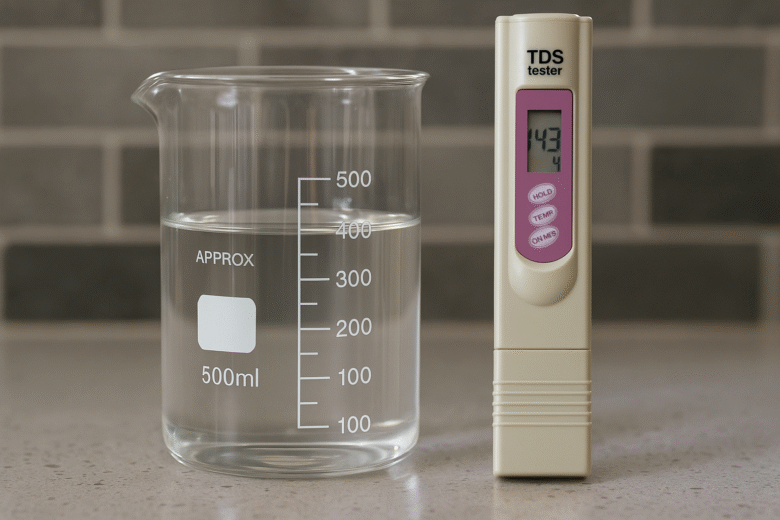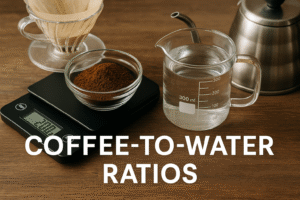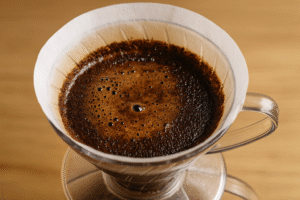You’ve picked the perfect beans. You’ve dialed in the grind size. You’ve mastered the brewing method. But if your coffee still tastes flat, sour, or dull, the problem might be hiding in your water.
Coffee is 98% water. That means the quality, composition, and temperature of your water dramatically affect the final flavor of every cup.
In this comprehensive guide, you’ll learn how water impacts extraction, what type of water to use, and how to adjust your setup for the best results—whether you’re using tap, filtered, or bottled water.
Why Water Quality Matters in Coffee Brewing
Water isn’t just a solvent—it’s a flavor carrier. The minerals in water interact with the compounds in coffee during extraction. These interactions determine whether the coffee ends up tasting sweet, acidic, balanced, or muddy.
There are three key factors in brewing water:
- Mineral content (hardness and alkalinity)
- Taste and odor
- Temperature stability
Using the wrong water can make even the best coffee beans taste lifeless.
What Is “Hard” and “Soft” Water?
Hard water contains high levels of minerals, especially calcium and magnesium.
Soft water has fewer minerals, and is often treated with sodium or chemicals.
Coffee loves minerals—but not too many. You want a balanced water profile that helps extract flavor without overwhelming or underwhelming the coffee.
Ideal Water Composition for Brewing Coffee
According to the Specialty Coffee Association (SCA), ideal water for coffee should have:
- Total Dissolved Solids (TDS): 75–250 ppm
- Calcium hardness: 50–175 ppm
- Alkalinity: 40 ppm
- pH level: Close to neutral (6.5–7.5)
This balance preserves acidity and body, enhances aroma, and prevents bitterness.
If that sounds technical—don’t worry. We’ll show you easy ways to test and improve your water without a chemistry degree.
Common Water Sources and Their Effects
Tap Water
- Pros: Cheap, accessible
- Cons: Varies by region, may have chlorine, metals, or excess minerals
- Fix: Use a carbon filter pitcher or faucet attachment to remove impurities
Filtered Water
- Pros: Cleaner taste, removes chlorine and heavy metals
- Cons: May still lack mineral balance for coffee
- Fix: Add mineral supplements like Third Wave Water if needed
Bottled Spring Water
- Pros: Often balanced mineral content
- Cons: Expensive and wasteful long-term
- Tip: Check the label—avoid distilled or “purified” types with zero minerals
Distilled or Reverse Osmosis Water
- Pros: Pure, neutral
- Cons: Lacks minerals—can under-extract and result in flat coffee
- Fix: Re-mineralize with drops or mineral packets
Softened Water (from home systems)
- Pros: Protects pipes and appliances
- Cons: High sodium can ruin coffee flavor
- Tip: Avoid using softened water directly in your coffee maker
How to Test Your Water for Coffee
If you’re serious about your coffee, consider testing your water with:
- TDS Meter: Measures dissolved solids (cheap and easy to use)
- Water Hardness Test Strips: Show mineral levels and help guide adjustments
- Taste Test: Brew the same coffee with two water types and compare—your tongue is the best lab
Try brewing one cup with tap water and one with filtered water. If one has more clarity, balance, or sweetness, you’ve found the better option.
Temperature: The Other Side of Water Quality
Even with perfect mineral content, your water must be the right temperature. Aim for:
- 90°C to 96°C (195°F to 205°F)
Too hot? Coffee can taste bitter, burnt, or flat.
Too cool? The result is sour, thin, and weak.
Let boiling water rest for 30–45 seconds before pouring. Or use a kettle with a built-in thermometer for precision.
Signs Your Water Is Hurting Your Coffee
- Flat, dull flavor: Possibly distilled or very soft water
- Overly bitter, dry finish: Hard water or high pH
- Metallic or chemical taste: Unfiltered tap water with chlorine or heavy metals
- Under-extracted brews (watery/sour): Poor mineral balance or low brew temp
If your brews consistently underwhelm, it’s worth testing or changing your water source.
Can Better Water Save a Bad Brew?
Yes—and no.
Great water won’t fix stale beans or a broken brew ratio. But if you’re already doing everything right, water becomes the final ingredient that brings the cup to life.
It’s the difference between “good enough” and “wow.”
How to Improve Your Brewing Water
- Use a Brita or carbon filter pitcher
- Avoid softened water if possible
- Try bottled spring water and compare flavor
- Add mineral packets like Third Wave Water to distilled water
- Store water in glass or stainless-steel containers—never plastic
For most home brewers, starting with filtered tap water is the easiest upgrade. It removes odors and tastes while preserving enough minerals for extraction.
Frequently Asked Questions (FAQs)
1. Can I use tap water for coffee?
Yes, but results vary depending on your location. If it tastes good on its own and doesn’t smell metallic or chlorine-heavy, it may be fine.
2. What happens if I use distilled water?
It under-extracts coffee and tastes flat. Always re-mineralize distilled water if you must use it.
3. What’s the best bottled water for coffee?
Look for spring water with moderate TDS (100–200 ppm). Avoid distilled or vapor-distilled types.
4. Is boiling enough to purify water?
Boiling removes bacteria but not chemicals or excess minerals. Use filters if purity is a concern.
5. How often should I descale my coffee maker?
Every 1–3 months, depending on water hardness. Scale buildup reduces brew temp and damages machines.
6. Can water affect crema in espresso?
Yes. The mineral content impacts pressure, texture, and flavor in espresso—especially magnesium.
7. What’s a quick fix if I can’t test my water?
Use a carbon filter (like Brita) and brew with freshly filtered water. It’s a safe middle ground.
Final Thoughts – Brewing Starts with Water
It’s easy to obsess over beans, grinders, and gear—but water is often the most overlooked ingredient in coffee brewing.
Using the right water ensures you’re tasting everything your beans have to offer: the acidity, body, sweetness, and aroma—all working in harmony.
Think of water not just as a medium, but as a flavor partner. Treat it with as much care as your coffee, and your brews will reflect it in every sip.

Marcio Luzardo is a coffee enthusiast and the voice behind Tudo Viraliza. With a passion for turning curiosity into practical knowledge, he shares easy-to-follow tips, guides, and insights to help readers enjoy better coffee every day. When he’s not writing, Marcio is exploring new brewing methods or diving into the rich stories that connect coffee to culture, lifestyle, and wellness.



